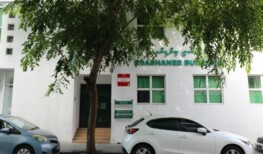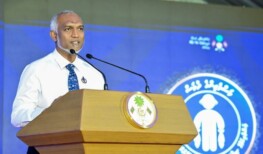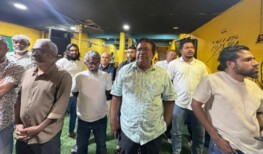The Price of Speaking Up: Environmental Activism in the Maldives
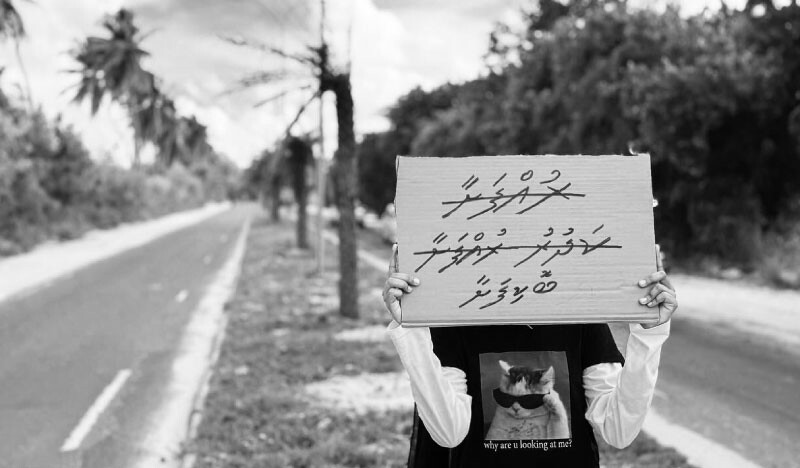
Photo: Project Thimaaveshi
In the early hours of 10 March 2022, residents of Addu City woke up to find their beloved Ruhfashaa, a historic landmark of palm trees lining the Link road, completely razed to the ground. There had been no public consultation, no warning — just the quiet disappearance of another piece of the natural heritage overnight.
The backlash was swift, with residents taking to social media to voice their opinions. The incident made the news. Addu City Council issued a statement, saying that the palms were cut down as they were old and causing danger to drivers and people using the road. But there was an overwhelming number of residents who spoke up against the council’s actions, feeling aggrieved at the loss of a natural landmark.
Two things from this incident stand out: the minimal transparency and consultation and the response from the Addu community to the city council’s actions.
Silent Complaints
On the opposite end of the country, something similar has been happening. For over a year, Kulhudhuffushi City Council has been quietly clearing out sections of the northeast shoreline vegetation to make way for a ring road. It started with some trees being felled and a road being cleared to link up with the rest of the outermost ring road, but the city council has continued to clear out more and more of the vegetation, emboldened by a lack of organized opposition. Recently, the council cut down two criss-crossing palm trees on the eastern end of Magaan Magu, a local landmark and a popular spot among residents. But apart from a few social media posts, there hasn’t been an overwhelming voice against the council’s actions like in Addu. This might appear strange, especially considering the recent history of the island.
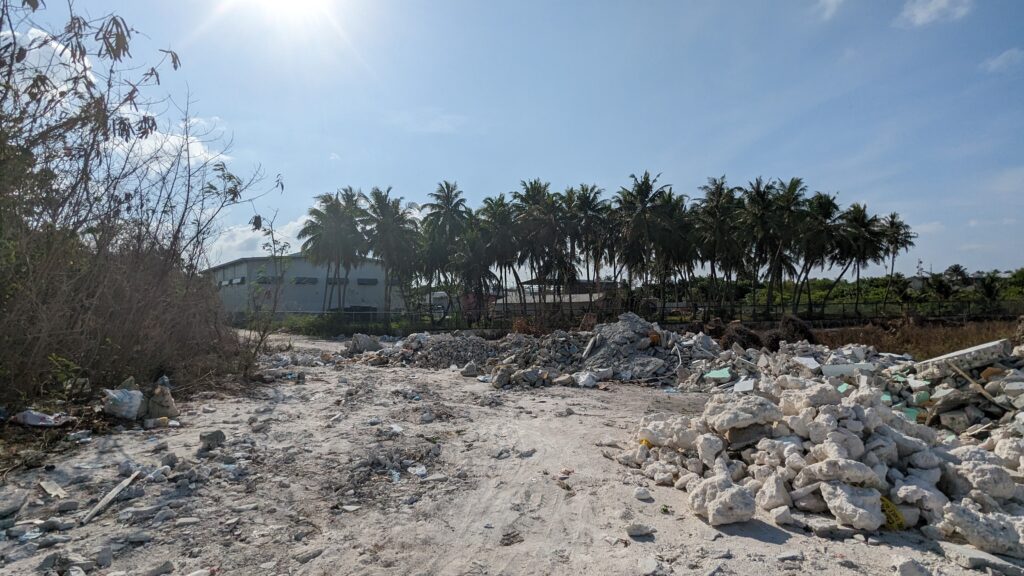
Kulhudhuffushi is no stranger to the loss of landmark natural ecosystems. In 2017, a huge part of the island’s famous mangroves was reclaimed to make way for an airport. The airport project divided opinion among residents. At the time, there was a real organised effort, led by Beleaf, a group of young environmental activists, to speak out against it and highlight the cost of losing the mangroves, calling for accountability. The reclamation of the mangroves dominated national headlines. A court case was lodged to halt the project, though it proved ineffective. The loss was, however, thoroughly documented on social media and in the press.
But seven years on, there is a hushed silence around rapid changes that have continued to wipe out the island’s greenery and replace it with urban structures. People, especially those living in the eastern ward of the island who regard the vegetation fondly, quietly talk about their disapproval and the rapid loss of ecosystems that have existed throughout their young age. But few people want to make public statements.
Ahmed* (not his real name), speaking under the condition of anonymity, said the silence from island residents is a result of organized efforts to stifle dissenting voices via targeted online harassment led by people loyal to the city council.
“The ring-road, it’s continuing in phases; at first, they just cleared the area for the road. Back then, there were at least people who said things about it. People who were unhappy with how it was done openly wrote on Facebook. But there was this kind of organised, targeted harassment aimed at these people.”
Ahmed described an informal group of active Facebook users, some of whom are aligned with the party of the council members, who have been relied on to reply to negative posts and comments and go as far as to target people seen to raise concerns repeatedly.
“You can say the wildest things on Facebook and get away with it. It counts as online harassment, bullying and whatever you want to call it. And it affects people differently, mentally and emotionally,” he says.
“We saw this when the trees were cut for the ring-road project, people talked about it and they faced online harassment and bullying, and now when the council continues to do similar things, they hesitate to talk about it.”
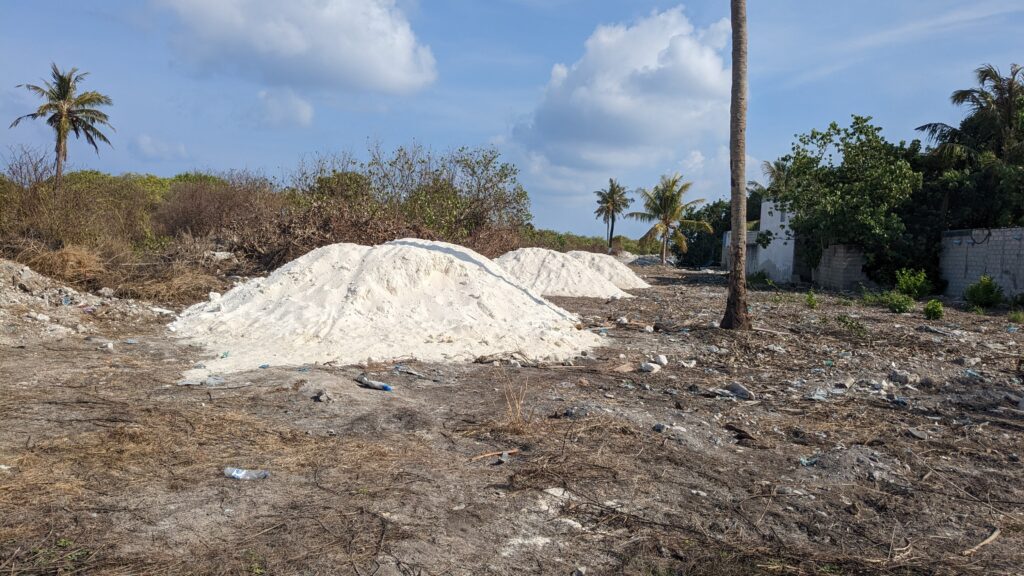
Ahmed recalls one well-respected community member, known for good relations with the city council who was “blacklisted” after making negative comments about the clearing of the shoreline vegetation. Soon after, he faced online harassment and attacks on his character using past incidents.
“The result is very clear. He doesn’t speak out anymore. He talks about his concerns privately to people he trusts,” Ahmed said.
“Against Development”
The cost of speaking up can be steep, especially in smaller island communities where social ties run deep and criticism of development projects is often viewed as opposition to progress itself.
Najaah Masood, a journalist who has covered environmental issues across multiple news outlets, has experienced this pressure firsthand.
In November, Najaah wrote a Facebook post highlighting a story he wrote for Sun Online about a harbour project in Vaavu Rakeedhoo in 2020.
“Five years ago, I wrote a report on Sun Online when there were plans to destroy the most beautiful beach in Rakeedhoo to build a harbour. I didn’t understand how local tourism could be developed after sacrificing the most beautiful area of the island.
Moments after the report was published, a Rakeedhoo cameraman from RaajjeTV called me and told me off. He almost told me to suck it. Next, I got a call from someone in the island council who was very unhappy and told me that the island needed the harbour to promote tourism.”
Despite facing intense criticism at the time, his concerns proved prescient. The project not only destroyed the island’s natural beauty but failed to deliver its promised benefits.
Last March, the same council member who had initially criticized his reporting was among the group of councilors who asked the president to relocate the island’s residents entirely.
Najaah said this was not an isolated incident, but one that is common if you frequently report on the environment and unsustainable development.
“I was a reporter in Sun Online, Mihaaru, Dhauru and now I’m an editor at Vaguthu so I don’t write as much. But back when I wrote about reclamation and harbour projects, and concrete development projects and the impact it has on natural ecosystems, we would get a lot of pressure from different stakeholders, like the council, contractor.”
“As soon as we hit publish, we would start getting calls from different places. Sometimes they would talk very aggressively and others would just try to justify the project. It happens so often and we get labelled as opposing development.”
Najaah said that despite the pressures, he believes journalists play an important role in highlighting environmental wrongdoing, especially when island residents living in tight-knit communities cannot.
“Most people still believe that development is something that comes with concrete. So, no matter how much environmental damage it would cause, the few people who are against it are sometimes afraid to loudly speak up about it. Reporters are the ones who can talk about it. So those people often tip-off journalists and ask to cover it and bring that issue into the limelight.”
Hope for the Future and Lessons from the Past
Back in Addu, there were reasons to be optimistic, but there were also lessons to be learned from what had happened elsewhere.
A small group of young people who recently graduated from school have banded together to form Project Thimaaveshi – a youth group advocating for civics, culture, heritage and environment.
Mishal Mushahid, founder and vice-president, explains that the group has been campaigning on social media against destructive practices by the council.
After the council began clearing up an area of the protected Fehele Kilhi, the group demanded accountability from the council, submitting RTIs, documenting and reporting its actions to the Environmental Protection Agency (EPA) and raising awareness by posting advocacy content on social media.
Mishal said the group’s relations with the city council have soured after the social media advocacy.
On a recent visit to the Addu Nature Park, he recalls being reprimanded by the council staff stationed at the park.
“They took me aside and gave me a bit of a lecture. They told us to remove photos with placards taken inside the Nature Park, but there was nothing negative about the nature park. It just said that the Nature Park is not the only protected space in Addu. We were making a point that Fehele Kilhi is also a protected area, even though people maybe don’t see it that way.”
Mishal also notes that the advocacy work by the group gets misunderstood and perceived as being against development or being done at the behest of some political party.
“I think the Addu community, especially the Hithadhoo community, is very polarized, so they only see things in those two colours. If it’s against the government, the opposition gave money, if it’s for the government, the ruling party gave money that’s how it’s seen.”
The youth advocacy work led by Project Thimaaveshi echoes the efforts of the Beleaf movement in Kulhudhuffushi years earlier, particularly during the contentious mangrove reclamation and airport development. Young people from Beleaf were among the most vocal critics of the project, and like Project Thimaaveshi today, they faced ostracism from their community for their environmental stance.
In the Maldives’ tight-knit island communities, where everyone knows each other and development projects often divide opinion, environmental advocacy comes at a personal cost. Yet from Addu to Kulhudhuffushi, from newsrooms to youth movements, a persistent few continue to document the destruction of their natural heritage and demand accountability. Their experiences highlight a crucial challenge facing the island nation: how to foster open dialogue about sustainable development in communities where speaking up can result in social ostracisation.
The reporting for this article was supported by the Maldives Journalists Association through their Freedom of Expression Reporting Grant 2024.







